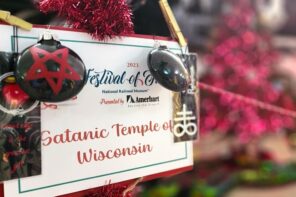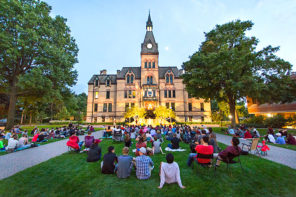Feisal Abdul Rauf’s Cordoba Initiative and the construction of Park51 Islamic community center in lower Manhattan has attracted more than its share of critics. Opposition from people like Sarah Palin, Newt Gingrich and the demagogues at Fox News was predictable, but what I find deeply disquieting is a recent poll showing that a majority of New Yorkers oppose the project. Such sentiment is not worthy of New Yorkers, and it violates this city’s long tradition of religious tolerance, dating back to the early decades of the seventeenth century.
When Jonas Michaëlius, the first Dutch minister in New Netherland, convened the first religious gathering in New Amsterdam in 1628, he commented on the religious diversity already evident in the colony. “At the first administration of the Lord’s Supper which was observed, not without great joy and comfort to many,” he wrote to his superiors back in Amsterdam, “we had fully fifty communicants – Walloons and Dutch.”
In addition to the Native Americans already here, New Netherland from its earliest days was notable for its racial, ethnic and religious diversity. Nearly a century after Giovanni da Verrazano, an Italian navigator in the service of France, discovered the inlet into New York harbor and the island we call Manhattan, Henry Hudson, an Englishman under contract to the Dutch East India Company, nosed the Half Moon through the same Narrows and struggled north on the river that now bears his name. The first group of settlers to disembark in Manhattan were Walloons, French-speaking Belgians, followed shortly by a modest influx of Netherlanders, Germans and French. English Puritans bracketed Dutch settlement on Long Island, while Swedes and Finns became the early denizens on the Delaware River to the South. Early reports filtering back to Amsterdam told of Huguenots, Mennonites, Brownists, Presbyterians, Quakers, Catholics, even “many atheists and various other servants of Baal.”
In 1654 the Sainte Catherine pulled into port, carrying twenty-three Sephardic Jews, refugees from Recifé. Why did they choose New Amsterdam? The Netherlands was the most tolerant society in Europe in the seventeenth century, and that tradition of tolerance marked New Netherland as well.
When Pieter Stuyvesant, director-general of the colony for the Dutch West India Company, sought to suppress Quakerism, the citizens of Flushing protested. The Flushing Remonstrance of 1657, one of the earliest calls for religious disestablishment in America, insisted on freedom of religious expression. Significantly, none of the thirty signatories to the Remonstrance was himself a Quaker.
Following the English Conquest of the colony in 1664, Governor Benjamin Fletcher, worried that New Yorkers were “a mixt People and of different Perswasions in Religion,” pushed the Ministry Act through the Assembly in 1693, a measure that he believed would establish the Church of England in New York City and the surrounding counties. New Yorkers, however, would have none of it, and they successfully frustrated its implementation in favor of religious freedom and diversity.
Throughout its history New York has accommodated – and even, more often than not, welcomed – religious diversity. Yes, sometimes such accommodation came only after a struggle, as with the Great School Wars of the 1840s, when Roman Catholics objected to the Protestant bias in public education.
But we New Yorkers eventually rise to our better selves. It’s no accident that when Lyndon Johnson signed the Hart-Cellar act of 1965, which removed immigration quotas, he did so in the shadow of the Statue of Liberty. That legislation, more than any other factor, has literally reshaped the religious landscape of both New York City and the nation as Hindu temples, Sikh gurdwārās, Buddhist stupas and, yes, Muslim mosques now dot the countryside.
In many respects, New York has always been the “city on a hill” for religious diversity, demonstrating to the nation and the world the virtues of tolerance. With the proposed Islamic center in lower Manhattan, we now have the opportunity to do so again.




